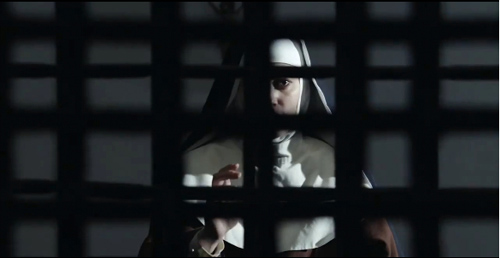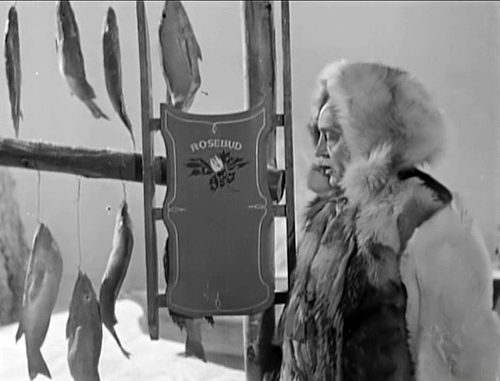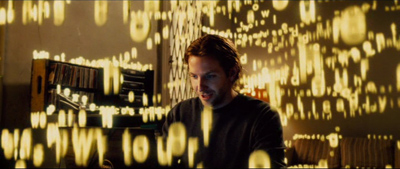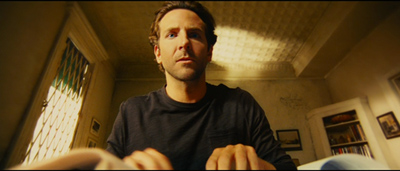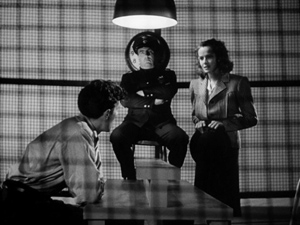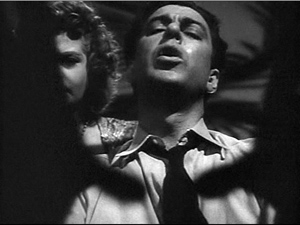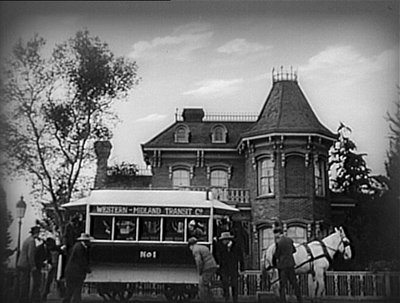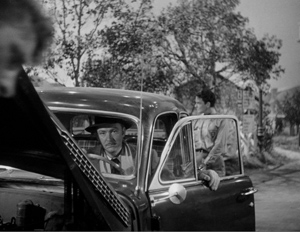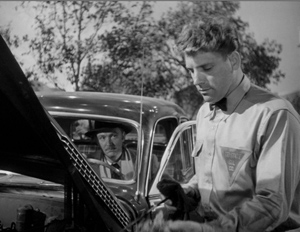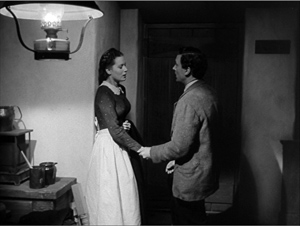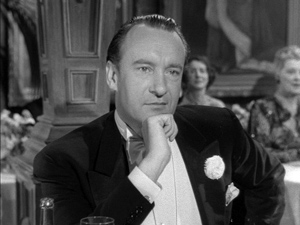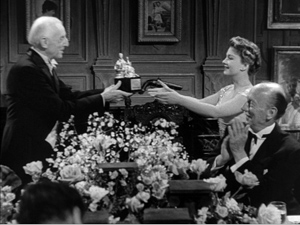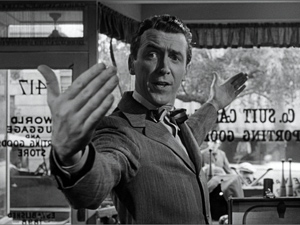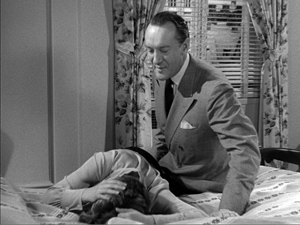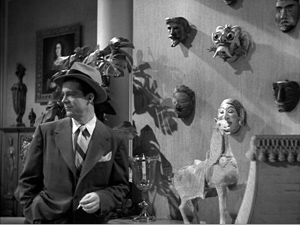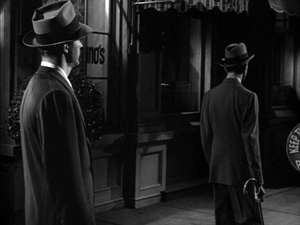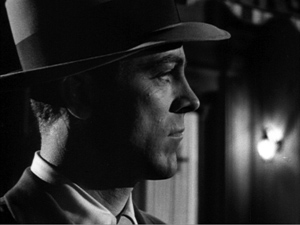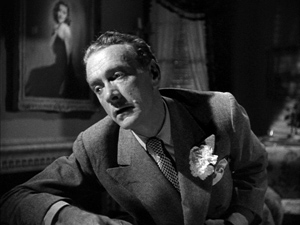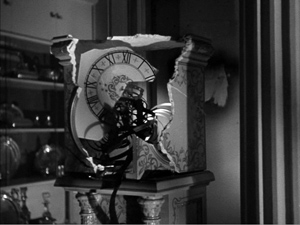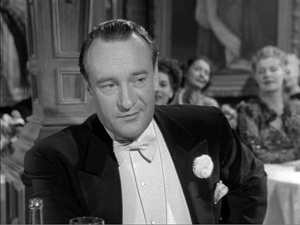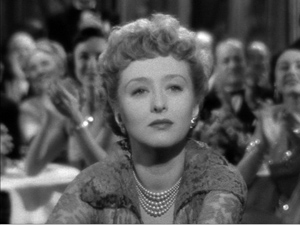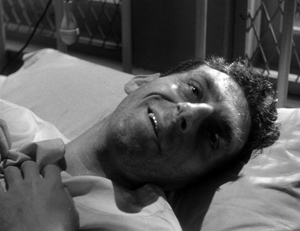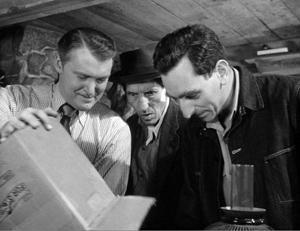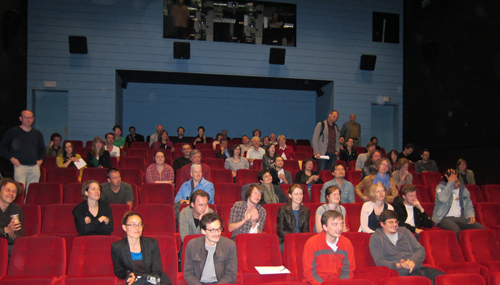Archive for August 2011
Ruiz, realism, and…me?
Mysteries of Lisbon (2010).
DB here:
Once Fassbinder said something to this effect: “One is always misunderstood. If you spend time clearing up misunderstandings, you’re dead.” Usually I think this is good advice. Now, though, a filmmaker whom I admire has, in publicity for a film that I admire, misunderstood me. So I’m squawking, mildly.
I met Raúl Ruiz only once, many years ago during his visit to our university here in Madison. We’d programmed At the Top of the Whale and Life Is a Dream. One afternoon we were sitting in the Student Union looking out over majestic Lake Mendota, and he started to muse. “I see a boat on the lake. Three men are in the boat. One is planning to kill the other two, but we don’t know which one it is.”
This was only one of many forking paths our conversation took. Over dinner that night Ruiz was at pains to explain that there was nothing new in Postmodernism that we couldn’t already find in the Spanish Baroque. That was pretty persuasive. He talked as well about his two production courses at Harvard. “In one, we shoot a drama as if it were a TV quiz show. In the other, we shoot a quiz show as if it were a drama.” In sum, typical Ruiz ebullience and passion for rethinking forms.
Earlier this year my name got linked to his in an unexpected way. In an interview, Ruiz mentioned that a Swiss magazine had claimed that Mysteries of Lisbon didn’t conform to “Bordwell’s Paradigm,” and he agreed. Alerted to this interview by Adrian Martin, I shook my head and thought, I don’t know what Bordwell’s Paradigm is, so how can anybody else? I suspect the label has to do with my characterization of classical Hollywood cinema, but who knows?
Since then Ruiz has signed a discussion of Mysteries of Lisbon that expands on the same theme. You can read it here. It starts off with a bang:
The American professor David Bordwell considered that all narrative strategies that can be applied to modern films are based on a certain notion of verisimilitude (or narrative evidence).
Thanks to them, the most unbridled fictions are acceptable and accepted. And this very verisimilitude, it is said, is averse to any straying from a guiding line (what is commonly called the action’s guiding arrow), with its variations in intensity and its turbulent twists and turns.
This theory, which depends on a certain number of rules often abusively attributed to Aristotle, finally became what purists hastened to naively call “Bordwell’s paradigm”–the whole of narrative strategies that stem from impulse, from the presumption of verisimilitude.
What is called “modern drama” or “bourgeois drama,” or even “the Ibsen Shaw postulate” has given rise to this superstition. In modern drama, structure and construction dominate, even beyond the poetic incoherence or the irrelevant facts it supposes. The author is an architect who builds shelters for fictions, various events which, and only because they are protected from the rain of the improbable, become credible and relevant.
Each of these fictions, of these mobile structures, is guided by a narrative arrow. But beware, only one per fiction: William Tell is a well-told story because only one arrow cuts in two only one apple, but the battle of Azincourt is not because Robin Hood and his people’s swarm of arrows does not enable one to read the time on the narrative clock, veiled as it is by clouds of arrows, each guided by its independent little intrigue. “Clouds and not clocks” would say Karl Popper.
In modern drama, the proliferation of truncated facts is not acceptable because it makes us stray from the notion of causality which is inherent to that of verisimilitude, and without which there would be no story.
Promoting a film by citing an American professor may not be the height of shrewd marketing, but put that aside. Peering through the haze of this rather awkward translation, I’m inclined to say that Ruiz mistakes my claims. I’ve said in several places that narrative, prototypically, requires causality. But that isn’t the same thing as claiming that such causality is realistic in nature, or that causality is the main attraction of narrative. Mainstream cinema, including Hollywood, often uses certain kinds of verisimilitude as an alibi for formal experimentation. And I’ve celebrated filmmakers like Eisenstein and Ozu who break away from narrative causality.
It’s ironic that on the same day I post a blog entry arguing that realism gets short shrift in studio cinema of the 1940s, I find Ruiz claiming that realism is my guiding light. If I disapproved of the “disparate, truncated, labyrinthine and baroque” aspects of narrative, I wouldn’t have said this about Mysteries of Lisbon:
This being a Ruiz film, there is as well a tangible pleasure in the artifice of storytelling. The film acknowledges that all the handy coincidences, buried pasts, multiple identities, and revelations of kinship are there for our delectation. . . .
This recounted history is only the first of a cascade of flashbacks, issuing from several characters, and these gradually show deep connections among persons tied to Pedro’s past. Secondary characters in one story become protagonists of another. The young hero is gradually displaced as the center of the action by war, secret romances, rivalries, duels, and infidelities. Like Pasolini in his Trilogy of Life, Ruiz is happiest when opening up a plot detour that will eventually become a new main road.
You can read my whole account, from last year’s Vancouver International Film Festival, here.
I think that Ruiz and I might disagree about how much Mysteries owes to psychological causation, and about whether labyrinthine trails can converge, let alone become highways. Both of us use metaphors of linearity, so maybe our disagreements are basically about whether the detours and paths are truly dead ends. Maybe I think his plotting is tighter than he does. Still, I expect that we’d agree that much of the pleasure of the film is its delight in apparently capricious digression.
Anyhow, my squawk is mild because it’s a pleasure to be misunderstood by a grand filmmaker. What Fassbinder didn’t say was that artists’ misunderstandings can be productive, leading to the creation of new artworks, and perhaps ideas about them.
If my remarks on Mysteries of Lisbon don’t make you thirst to see it, Manohla Dargis’ review surely will.
Puppetry and ventriloquism
“I thought they burned that.” Hellzapoppin (1941).
DB here:
Coming back from my five-week stay in Europe (known in the Midwest as Yurrrp), I watched two releases I’d missed in the spring. Neither one was of outstanding quality, to put it mildly, and both were limited by “having been formatted to fit” the 4 x 3 airplane screen. Still, I was struck by how much both were like the 1940s movies I’d just been talking about with eighty participants in the Antwerp Zomerfilmcollege.
Of course the films’ look and feel were quite different, with Bouncycam and fast cutting instead of the rock-steady compositions and more sedate pace of the 40s films. But since I’d been concentrating on narrative matters, both of the recent releases chimed with my concerns in the course.
For one thing, both relied on flashbacks. Battle: Los Angeles used the technique casually. After a brief prologue showing our squad in a helicopter heading into a firefight, we get a title, “Enemy contact minus 24 hours.” This takes us back to the previous day, when the aliens’ attack seemed merely a meteor shower. We get to meet the Marines’ team in the usual vignettes of guys buddying around, planning their futures (one grunt is getting married soon), and nursing their woes (ageing, or mourning a slain brother). Why couldn’t these twenty minutes of exposition be given at the outset? Do the makers think we’re too impatient to wait for the first alien onslaught? Do they think we don’t know that the whole premise of the movie is an interplanetary assault on LA? In any case, the flashback is over by the sacred 25-minute mark, and we’re plunged into the ongoing action, starting with the team’s effort to save some civilians trapped in the combat zone.
Limitless used a more extended flashback. It follows what I called in Antwerp the “crisis” architecture, whereby the plot begins at or near the action’s climax and then moves back to the point at which the main story action begins. A prototype of the structure is The Big Clock (1948). Accordingly, Limitless opens with the protagonist about to leap off a high-rise terrace while his enemies pound at the door of his apartment. Then we return to his origins as a grungy wannabe writer, and the bulk of the film moves toward the critical point shown in the opening.
Limitless also reminded me of the 1940s’ penchant for rendering character psychology through subjective film techniques. After Eddie Morra takes the mind-enhancing drug, his world becomes distorted and we get unusual angles on him.
But Eddie’s head trips have precedents in the frenzied dream sequence of an early film noir like The Stranger on the Third Floor (1940). A frantic rehearsal montage in Blues in the Night(1941), with its shots from the “viewpoint” of a piano keyboard, pushes the pictorial envelope further than the comparable shot in Limitless.
Today’s digital technologies make it easier to go for extreme effects, but wild imagery is nothing new, especially when it’s motivated as representing extreme subjective states.
Of course flashy storytelling, including time-juggling and subjective images and sounds, can be found in cinema before the 1940s. But in that era they became more prevalent, in effect a “new normal.” And very quickly filmmakers sought to push them further, with results that linger today. In The Way Hollywood Tells It, I try to argue that the flagrant artifice of 1940s films was revived in the 1990s and 2000s. Citizen Kane is in a way the ultimate “puzzle film,” with one clue to the meaning of Rosebud tucked away in a minor set. The narrative gymnastics of The Hudsucker Proxy, Pulp Fiction, Memento, The Matrix, Inception, Shutter Island, and many other movies hark back to the revisions of storytelling traditions that crystallized fifty years earlier.
Unelected affinities
It’s not just that the two airborne movies chimed with what I’d been screening. Anyone who teaches art or literature is familiar with what we might call the cluster-surprise effect. When you assemble a batch of books or plays or films to make up a semester course, you start to notice affinities you wouldn’t have spotted if the artworks hadn’t been set side by side.
To a greater degree than usual, cluster surprises arose within the movies I screened for the Belgian Zomerfilmcollege. I’ve participated in these summer movie camps before, but seldom have I had such a sense of interconnections among the films we watched. It’s as if the makers were talking to each other, or at least looking over their shoulders at what their compadres were up to.
To some extent, convergence was to be expected. The films were picked to illustrate storytelling innovations in 1940s Hollywood films, so that guaranteed some overlap. Moreover, I’ve elsewhere suggested that filmmakers are making movies as much for each other as they are for the general public. My most recent instance was in a peculiarly recurring ad for ale.
So I probably shouldn’t have been as surprised as I was. Still, I was initially ready to notice changes within individual directors’ outputs, such as Welles’ development from the quietly controlled pressure of The Magnificent Ambersons to the narrative fireworks of The Lady from Shanghai. What I didn’t expect was the crosstalk among Ford, Mankiewicz, and Siodmak in their handling of flashbacks, or the way that the elegant methods of characterization found in A Letter to Three Wives set off the opacity and contradictory behaviors of the love triangle in Daisy Kenyon.
I need to think more about how the films we screened, plus the hundred or so others I’ve been watching in the spring and summer, can illuminate our understanding of creative choices facing filmmakers then (and today). Some of this thinking will eventually surface in more extended writing, I hope. For now, here are three ideas about 1940s storytelling, sparked by the sheer juxtaposition of interesting movies.
Of course there are spoilers. The films most vulnerable to spoilage are Laura, The Killers, All About Eve, and Sunset Blvd. Maybe you can use your parafoveal abilities to skip the passages that deal with ones you haven’t seen.
Art as artifice
The Magnificent Ambersons (1942).
The 1940s highlight a basic feature of Hollywood cinema, and indeed most popular traditions I know. Artifice, often self-conscious artifice, usually rules. It’s most evident in crazy comedy (see way up top), but even dramas seldom yield what people usually think of as realism.
Imagine a continuum between surveillance-camera video at one extreme and ballet or commedia dell’arte at the other. Hollywood lies much closer to the stylized side than to the documentary-recording side. This tradition is heir to a host of conventions derived from painting, drama, vaudeville, opera and operetta, prose fiction, and, by the 1940s, radio. All of the resources of these arts are brought together for the sake of telling a compelling, moving story, and anything that works is fair game.
Take one technique that became robust in the 1940s, the voice-over narrator. Some theorists claim that every narrative must have not only a narrator but a “narratee,” somebody who is listening to the story being told. Yet in most situations we haven’t the foggiest idea who the narratee would be.
At the start of The Magnificent Ambersons, Welles’ ripe baritone tells us things about the town, the family, and long-gone fashions. At the start of All About Eve (1950), the urbane Addison DeWitt promises to give us the dirt on the young woman’s rise to stardom. The cases are significantly different. Welles creates what we might call an external narrator, one who isn’t participating in the events we witness. Addison is a character narrator, one who exists within the story and plays a role in the action. In either case, though, we can ask: To whom is the narrator speaking?
Addison isn’t addressing other characters, even in retrospect; we never see anyone listening to his tale. Welles’ voice-over narrator can’t be addressing the characters because he isn’t in the story world at all. So who’s listening? Before you say, “Well, they’re addressing us, the audience,” remember that both these narrators are fictional beings. They don’t exist in our world and we don’t exist in theirs. In daily life, if you said your nonexistent friend told you of his adventures, we’d tend to wonder about you, and we’d certainly place little credence in the events reported.
In art, though, no problem. It’s simply a convention—a piece of artifice—that lets us accept the voice-over as a mimicry of a conversational situation (a person speaking to another) and delete the part that assumes a tangible listener. So the commonsense answer is right. These narrators are speaking to us. In fact, everything in a fiction film is addressed to us. If you want an ontologically tidy answer: The actual filmmakers are the storytellers, the actual viewers are the audience, and everything else is smoke and mirrors, or puppetry and ventriloquism.
You can put it more generally. As often happens, the movie summons up a familiar schema from ordinary life, the conversation, but revises it for artistic purposes. The film draws on certain features of reality but deletes others, retaining just enough salient bits to prompt our understanding. Filmmakers can assemble, in the manner of collage, pieces of standard social interactions for particular effects. Our response depends on the patterns that are formed, not on the reality status of the bits or of what is left out. We concentrate on the effect, not the means used to trigger it.
The same thing goes for the narrator’s range of knowledge. In literature, the “I” narrator typically cannot report things she doesn’t know about. If something happens that she couldn’t witness at the time, she’s obliged to explain how she learned about it subsequently. But internal filmic narrators often lead us into moments, or entire sequences, that they weren’t present to witness. In The Killers (1946), Nick Adams tells the insurance investigator Riordan that Ole the Swede encountered a mysterious man from his past, but given Nick’s position at the rear of the car, paying no attention to the encounter, he couldn’t have observed the way Ole intently avoids meeting the driver’s eyes.
Huw, the narrator of How Green Was My Valley (1941), didn’t see, and may not have known about, his sister Angharad’s visit to Reverend Gruffyd.
Yet the scene, played out between the two near-lovers, is given to us within the narration established as Huw’s.
By convention, then, filmic narration allows a lot of leeway to a character narrator. Again, a realistic situation, someone reporting on what they know, is treated in a partial, stylized fashion for the sake of sharpening the effect. We’re more curious after noticing the driver’s frowning look at Ole, whether or not Nick could have strictly seen it. We’re more intensely involved with the emotion of the Angharad/ Gruffyd romance than if we simply saw Huw learning about her visit later.
Proteus in Hollywood
Once a convention is put in place, somebody is bound to play with it. A one-off example occurs in Ambersons, when we get this exchange on the soundtrack:
Gossip: They’ll have the worst spoiled lot of children this town will ever see.
. . . .
Narrator: The prophetess proved to be mistaken in a single detail merely. Wilbur and Isabel did not have children. They had only one.
Gossip: Only one! But I’d like to know if he isn’t spoiled enough for a whole carload.
(Interestingly, Welles doesn’t present this exchange in his 1938 radio version of the novel.) Likewise, the opening of Eve is trickier than I indicated, partly because Addison’s narration is accompanied by a freeze-frame at the moment the award is presented.
Since a few years before this, It’s a Wonderful Life (1947) showed angels freezing time and commenting on George Bailey’s dreams, you have to wonder if Mankiewicz isn’t endowing Addison with a supernatural power.
Addison will, by the end of the film, be utterly in control of Eve.
The 1940s and early 1950s see an immense amount of experimentation with narrators. Narrators can lie about what they report. They can be dead (Scared to Death, 1947; Sunset Blvd, 1950), otherworldly (the angels in It’s a Wonderful Life), non-human (the house in Enchantment, 1948), or of uncertain status (Woman in Hiding, 1950).
A good example of the high artifice of the period comes in Laura (1944). The film is introduced by Waldo Lydecker’s voice-over, remembering “the weekend Laura died,” and remarking on the detective Mark McPherson, wandering through Waldo’s art collection. Waldo’s voice-over, describing events in the past, might seem to assure us that he survives the ensuing story.
Fairly soon Waldo’s voice-over reappears, but it doesn’t frame the overall fiction. As he explains his relationship with Laura to McPherson, we get episodic flashbacks showing Laura’s rise (and, true to form, including events Waldo couldn’t have known about). At the end of their evening together, the film’s narrational weight shifts visibly to Mark, showing him in an uncharacteristically tight close-up watching Waldo depart.
The absorption of Waldo’s voice into the overall texture of Mark’s investigation invites us to forget that Waldo initiated the film, and that he in fact fed us false information. (Laura didn’t die that weekend.) So the ending, in which Waldo falls before policemen’s pistol blasts, comes as a new surprise. The camera tracks away from him murmuring, “Goodbye, Laura”, past Laura and Mark, to the shattered clock face that recalls what Waldo’s shotgun did to Laura’s surrogate.
Over this image we hear Waldo’s voice: “Good night, my love.” From one angle, the line could be considered Waldo’s offscreen dying words, continuing his murmured farewell to Laura. Yet the last line is closely miked in the manner of the opening voice-over, suggesting a voice from beyond the grave. Was Waldo narrating the first scene from the same place? Is this a tale told by a corpse? The ending is equivocal, hovering between the two possibilities.
Again and again, the films we saw fractured tidy patterning. Addison’s voice-over narration in All About Eve gives way to that of another character, Karen Richards. After he glances at her, a cut presents her voice-over taking up the burden of introducing us to the young Eve in a flashback.
How to explain this tag-teaming, except as pure artifice, a new wrinkle in a convention that by 1950 had become second nature to filmmakers and viewers?
In The Killers, the dying crook Blinky is questioned by two investigators. No problem about narratees here; he speaks to them. But the film makes a new problem for itself. Blinky is too far gone to respond to questions. All he can do is mutter phrases from the past. Yet the film’s narration dramatizes his ravings, presenting the scene he invokes as fully as any other.
Is this what his listeners are imagining? No; it’s just a stretching of the conventions surrounding the character narrator. After several orthodox voice-overs earlier in the movie, we can assume that Blinky’s babble will be translated into solid scenes, as more articulate talk has been earlier. Again, plausibility is flagrantly violated; who could construct a coherent set of actions, let alone a legal case, out of fragmentary phrases? But who cares? Blinky is a device to get us into the past, and the filmmakers assume that we’ll follow the most slender lead they offer.
Meir Sternberg has articulated a powerful case that there are no “package deals” in verbal art. Any narrative or stylistic device can fulfill a wide range of functions, and any functions can (with sufficient motivation) find expression in many different techniques. To take a filmic example, a dissolve can indicate a passage of time, but sometimes a dissolve (say from a long-shot to a closer view of a character) suggests continuous duration. And a cut may indicate continuous time, but it can also indicate that a stretch of time has been skipped over, as throughout Resnais’ Muriel. Sternberg calls this the Proteus Principle, “the endless interplay between form and function.”
Along these lines, conventions within a tradition can be seen as the most probable fit between form and function, the ones we expect because we’ve seen them in other films. In studio-era Hollywood film, dissolves usually signal a passage of time, and cuts within scenes usually indicate continuity. But those functions are local and subject to revision. Likewise, a voice-over narrator is unlikely to talk with the characters, except in the case of comedy. For Welles to try it in a drama was a bit daring, but it simply shows that there is room, if the filmmaker proceeds carefully, to stretch the convention. (It had already been stretched in both the play and film versions of Our Town.)
Collaborative competition
How to explain these fractures of form? Invoking a Zeitgeist explanation—wartime trauma, postwar dislocation—seems to me a desperate measure, for reasons I’ve outlined elsewhere. In the Antwerp sessions, I suggested some other explanations, which I hope to justify at greater length another time. For now, let me propose just one factor that seems to me to have contributed to the wilder side of 1940s storytelling.
The famous opening of E. H. Gombrich’s Story of Art—“There really is no such thing as Art. There are only artists”—is open to many interpretations. One is that art history is driven by the human dispositions of the image-makers. Those dispositions include rivalry. In his 1974 essay “The Logic of Vanity Fair,” Gombrich further explores the role of competition among artists. In many traditions, they may try to raise the stakes, seeking to outdo others in virtuosity. I’d add that such artists either try to beat their predecessors and contemporaries at their own game, or to invent a game in which a newcomer can excel. Later in his career Gombrich suggested an analogy to ecology: some artists fight for the same niches, others adapt themselves to unexploited ones.
From this standpoint, I’d suggest that a close-knit world like Hollywood encouraged competition among its creators. In the period I’m concerned with, some ambitious Hollywood filmmakers (not only screenwriters but also directors, cinematographers, and their colleagues) saw voice-over narration as an opportunity to innovate. The technique may have arisen partly because people were used to it from radio, and it offered advantages in efficiency and low cost. Detour (1945) shows that a fairly static, cheaply shot scene can be energized by extensive voice-over. Ambitious filmmakers could make this still-emerging technique more forceful, more mysterious, more evocative. The cost of this effort was some violation of realism and an occasional violation of tidy form.
In just a few years, we go from Welles’ external narrator being sassed by a gossip to Mankiewicz’s character narrator passing the expository ball to another character. We see a community of creators pushing each other to revise a schema they inherited, to test its limits and find new effects it could create. I think that this “collaborative competition” operates in other innovations of the period, such as the long take, the flashback, deep-focus cinematography, and sound manipulations.
Something like this creative community still exists. Urges to compete through innovation (or to revive older conventions) seem to drive some of our filmmakers. The impulses assume a feeble form in Limitless and Battle: Los Angeles, but at least these program pictures remind us that competition isn’t only financial; it’s also artistic. The pressure to come up with a fresh revision of a familiar schema is, if anything, keener today than in the 1940s. Insidious has to top Paranormal Activity, which itself revised a traditional formula in fresh ways.
The snag is to do something that we haven’t seen before. That’s tough when you come at the end of the line that includes filmmakers like Ford, Hitchcock, and so many others. This is the problem of belatedness, and some day it will get a whole entry of its own.
Two especially strong books on Hollywood cinema of the 1940s are Thomas Schatz’s Boom and Bust: American Cinema in the 1940s (University of California Press, 1997) and Dana Polan’s Power and Paranoia: History, Narrative, and the American Cinema, 1940-1950 (Columbia University Press, 1986). By presenting a detailed overview of industrial developments, Schatz supplies a vivid context for studying artistic trends. Polan, focusing on an immense range of films, aims to explain their formal and thematic qualities from a broadly Foucauldian perspective. Here “discourse” assumes an immense power over the way the films look and sound, and the motive force behind the discourse is largely, though sometimes obliquely, World War II.
In addition, I should pay tribute to Sarah Kozloff’s fine Invisible Storytellers: Voice-Over Narration in American Fiction Film (University of California Press, 1988). Kozloff includes concise, sensitive analyses of How Green Was My Valley and the opening of All About Eve. For the latter film, she traces Addison’s narrational power in some detail. Needless to say, my thinking has also been influenced by Kristin’s essays on Laura and Stage Fright, to be found in her collection Breaking the Glass Armor: Neoformalist Film Analysis (Princeton University Press, 1988).
For more information about Mankiewicz’s plans for All About Eve, including a scene replaying earlier action with different significance, see Gary Carey, More about All About Eve (Random House, 1972), 56-58. According to Carey, Mankiewicz shot this and other material that was excised in the editing stage. The version of the screenplay printed in Carey’s book clearly isn’t the shooting script (it seems to be close to a transcript of the finished film), and it does contain the passages I’ve considered: the freeze-frame (p. 127) and the moment in which the narrational voice slips from Addison to Karen (p. 128). This published version is widely available online in various formats; the typescript copy available here carries the tag “Shooting Draft” and doesn’t contain the scenes that Carey claims were dropped in postproduction.
My quotation from Meir Sternberg comes from “Narrativity: From Objectivist to Functional Paradigm,” Poetics Today 31, 2 (Fall 2010), 594. Gombrich’s essay, “The Logic of Vanity Fair: Alternatives to Historicism in the Study of Fashions, Style and Taste,” appears in his collection Ideals and Idols: Essays on Values in History and in Art (Phaidon, 1979), 60-92.
In my Antwerp talks I approached questions of form and style in the 1940s by trying to reconstruct the creative problems and solutions arising within the filmmaking community. For me, filmmakers working within institutions are the most proximate agents of stability and change. For examples of this approach, see my chapters of The Classical Hollywood Cinema, The Way Hollywood Tells It (which considers the problem of belatedness), and my analysis of Mildred Pierce in Poetics of Cinema. My critique of Zeitgeist or mood-of-the-moment explanations can be found in Poetics of Cinema, 30-32.
You can sample how I’ve tried this approach out in pieces on this site. For instance, this entry examines artistic competition through the example of high-school lipdubs, this one talks about our appetite for artifice, and this one discusses how Cloverfield solves the problem of point of view in a monster movie. This essay on actors’ eye behavior develops the idea that filmic conventions often remake, in streamlined form, familiar aspects of social interaction. I hope to develop my case for the 1940s more thoroughly at some future point.
Zomerfilmcollege, Antwerp (July 2011). For more on this event, see earlier entries here and here.












